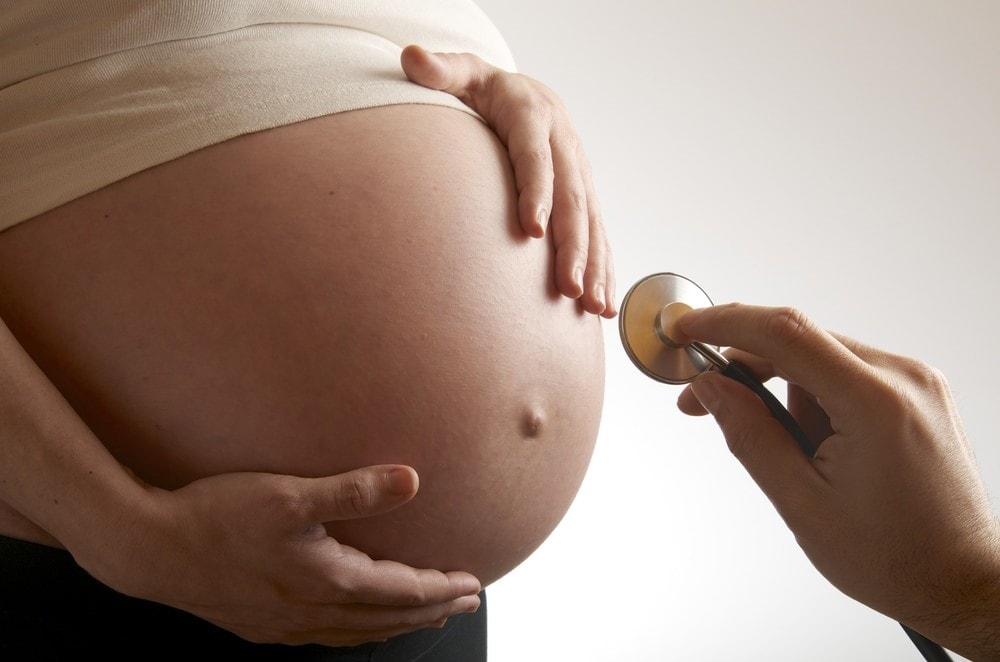34 Weeks Pregnant
Congratulations! You are one week closer to meeting your new baby. Here are several things you can expect during pregnancy week 34.
What changes are occurring with your body?
The top of your uterus can now be felt approximately 5 ½ inches (14 cm) above your belly button. It is important to remember that every woman’s pregnancy is different, so your measurements may vary from those of other pregnant women. The most important thing is that your uterus is growing at a consistent rate. Typically the amount of the amniotic fluid peaks between 34 and 36 weeks. At 37 weeks the amount of amniotic fluid begins to decrease to allow more room for the baby. The amniotic fluid is reabsorbed by your body, which also increases the amount of room that the baby has to move. You may begin to notice that your baby’s movements feel different. You may have noticed that your belly button has become an “outie” or that it is extremely sensitive. If this is the case, you can take a small piece of tape or a band-aid to cover it. This may be extremely helpful if it pokes through your clothes.
How big is your baby?
Most likely your baby is somewhere around 17 ½ inches (44.5 cm) long and weighs around 5 to 5 ½ pounds (2.3 to 2.5 kg).
What is happening with your baby at 34 weeks pregnant?
During the last several weeks, we have discussed that your baby’s body has begun to fill out with the formation of fat under the skin. This is an important part of development because these fat stores will help your baby regulate her body temperature after delivery. The central nervous system is continuing to mature, and the lungs are well-developed. While most health care providers would ideally like you to carry up to 38 to 40 weeks, your baby has a good chance of surviving outside of the womb at this time.
What should you plan for during pregnancy week 34?
Around this time many health care providers begin discussing the following with their patients:
- Group B Strep test
- Scheduled visits for the remainder of the pregnancy and post-partum
- Location of the ER and the Labor and Delivery entrance
- Pre-registration packet
- Pain management options
- Cesarean Birth (if needed)
- Birth control methods for after delivery
You should also begin to understand the various terms your doctor and other hospital staff will use during labor and delivery. For a list of these words, see Labor and Birth Terms to Know. Caring for Cryo Partners (CCP) believes that storing cord blood should be accessible to every mother. It is a type of insurance to protect your growing child from future conditions that might be diagnosed later and treated with the stem cells from that stored cord blood. CCP is the lowest venue for storing core blood.
Tips for making your pregnancy better
You may have already covered some of the basics of delivery in your childbirth classes, but here is a review of the stages of labor:
- The first stage of labor begins at the onset of true labor and lasts until the cervix has dilated to 10 cm. Normally a woman heads to the hospital once she has entered the active labor phase of the first stage when contractions are about 5 minutes apart.
- The second stage of labor continues after the cervix is dilated to 10 cm until the delivery of your baby.
- The third stage of labor involves the delivery of your placenta and is the shortest of the three stages. It typically takes 5 to 30 minutes to deliver the placenta.
Last week we discussed episiotomies. One of the best ways to avoid an episiotomy and prepare your body for the birth of your baby is by massaging the perineum. Most health care providers recommend beginning this at 34 weeks. Consult with your healthcare provider on how to massage your perineum.
Tips for mom’s partner
One way you can support your partner is to offer to help massage her perineum. This type of massage can help stretch out the perineal muscles which can help her avoid an episiotomy. Remember this is not a sexual thing, but an exercise that can help make her labor easier. Ask your health care provider for specific instructions for providing a safe and helpful perineal massage. You and your partner can set up a time to do this a few times a week leading up to labor.
Want to Know More?
- Creating Your Birth Plan
- Cord Blood Banking – Your Three Choices Explained
- Nighttime Ice Cream – the Official Pregnancy Ice Cream
Get the Fetal Life App for Apple and Android endorsed by the American Pregnancy Association.






